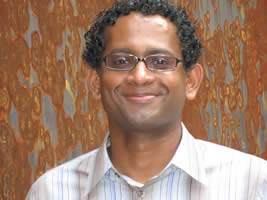News Story
Baras is PI for $1M NIST cooperative agreement
Professor John Baras (ECE/ISR) is the principal investigator for a $1 million cooperative agreement with the National Institute of Standards and Technology. Associate Professor Mark Austin (CEE/ISR) and ISR postdoctoral researcher Shah-An Yang are co-principal investigators on the agreement. The research team will help NIST develop and deploy standards, test methods, and measurement tools to support consistently reliable performance of new smart systems.
These cyber-physical systems (CPS) knit information and physical technologies into interactive, self-optimizing products and infrastructures ranging from smart cars, aircraft and buildings to an intelligent electric power grid. By developing standards, test methods, and measurement tools, the UMD/NIST effort can help U.S. industry accelerate development of innovative cyber-physical system products that create jobs, while also protecting these new types of CPS infrastructure from cyber threats.
“Current approaches to engineering CPS are at their infancy at best, and they are too application-specific, too costly, too error prone, and they take too long,” explains Baras.
“There is a clear need for unifying principles within and across application domains. Investigating and understanding how the cyber components can be synergistically interweaved with the diverse physical components in CPS pose foundational research challenges in science, engineering and computing, and they will transform science and engineering education. We welcome the opportunity to help meet this need and the associated challenges by working closely with NIST scientists and engineers.”
Under the new cooperative agreement, UMD and NIST will evaluate the existing technical and theoretical foundation for today’s rapidly evolving CPS, identify gaps and obstacles, and ascertain needs for measurement and standards. The ISR research team also will assess existing and anticipated markets and develop a framework to help guide investments in CPS-related research.
Awarded over three years, the funding also will support efforts to devise a framework that fosters an “open standards platform” approach enabling systems and underlying subsystems and components to work together interoperably. This is expected to unleash creativity in developing innovative, new applications. Other research activities will focus on developing modeling and analytic tools for designing, integrating, testing and managing CPS.
About CPS
CPS are networked physical, computer, and biological technologies. Examples are building control systems and remotely monitored and controlled medical devices. Computing, communication and automation capabilities are integrated into nearly every interconnected component of such systems, including the materials from which they are made.
Computing, sensing, communication, control and related technologies already account for significant shares of the cost of cars, planes, machine tools, medical equipment and a host of other products. For many of these products, the CPS portion is expected to exceed 50 percent by the end of the decade. Innovations that distinguish one competitor’s offerings from the rest of the pack will depend increasingly on the mastery of CPS.
“Smart vehicles, buildings, electric grids, and manufactured products that combine IT and physical technologies into interactive, self-fixing systems are transforming industries,” explains Shyam Sunder, director of NIST’s Engineering Laboratory. “These systems are fiendishly complex. Yet, the hardware and software must work 100 percent of the time. We want to help industry ensure that the systems are safe, secure and resilient.”
“While we can expect an ever larger and more diverse range of smart operating systems and applications,” says Sunder, “they all share a basic set of requirements that should not be addressed in stovepipe fashion. With this effort we will take a broad view of these new technologies as we develop standards and measurement tools that would apply to all.”
About NIST
NIST is a non-regulatory federal agency in the U.S. Department of Commerce. It promotes U.S. innovation and industrial competitiveness by advancing measurement science, standards, and technology in ways that enhance economic security and improve quality of life.
| Read the NIST press release about this award |
Published October 11, 2011





